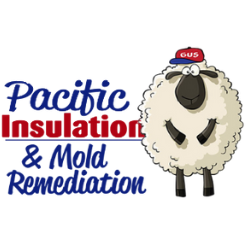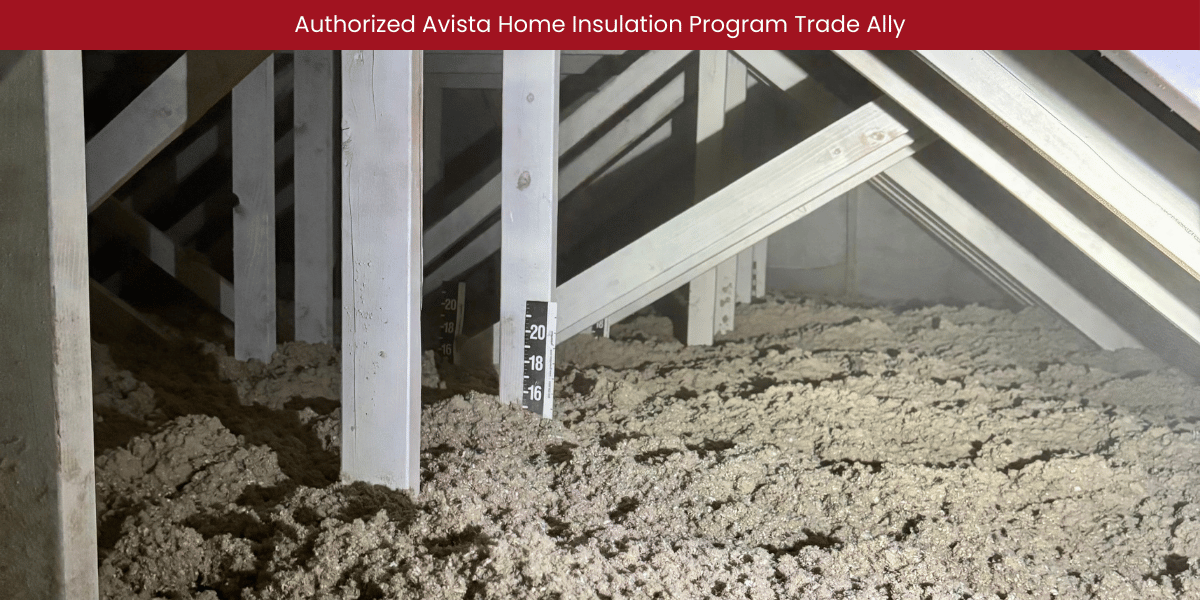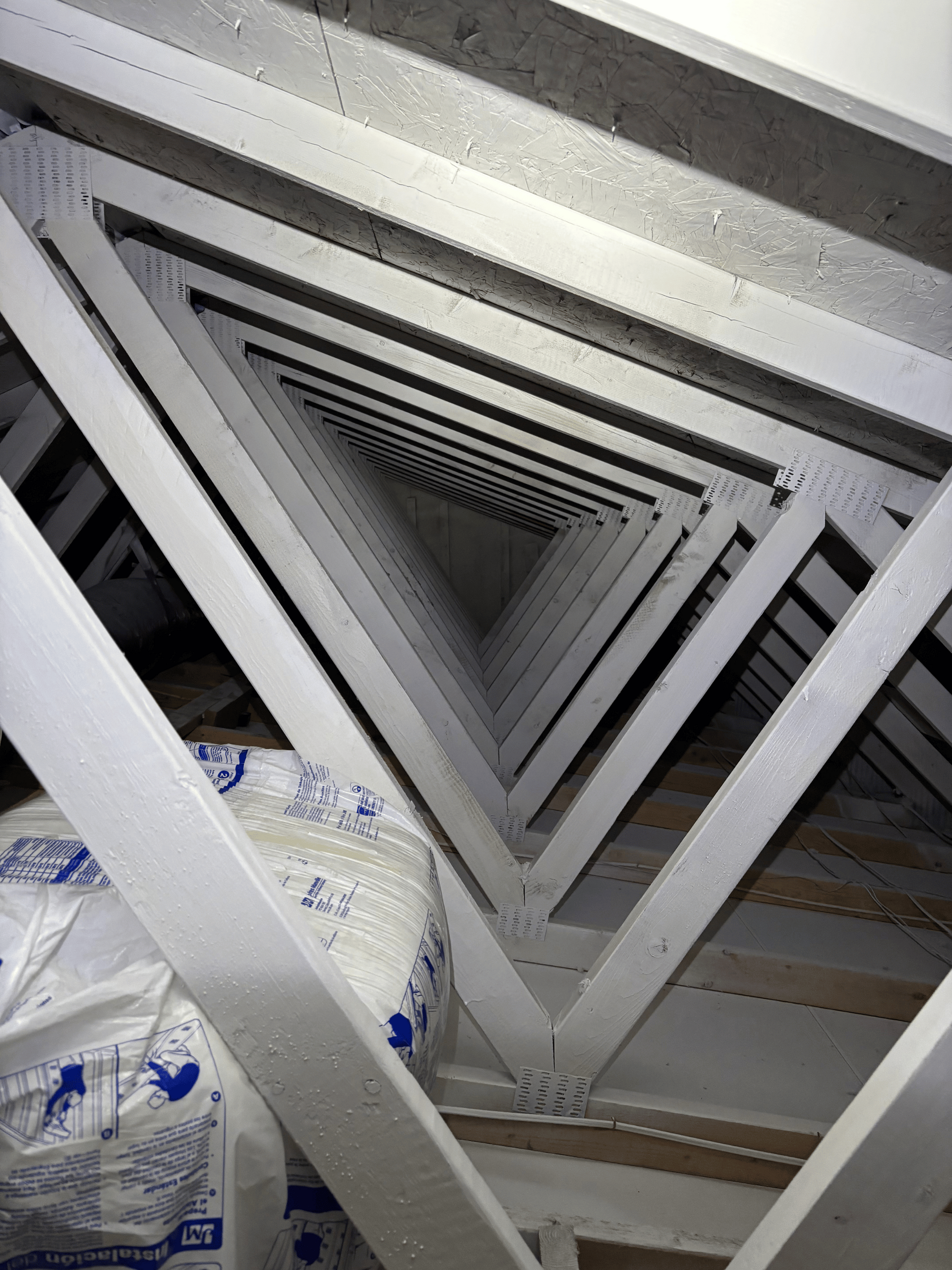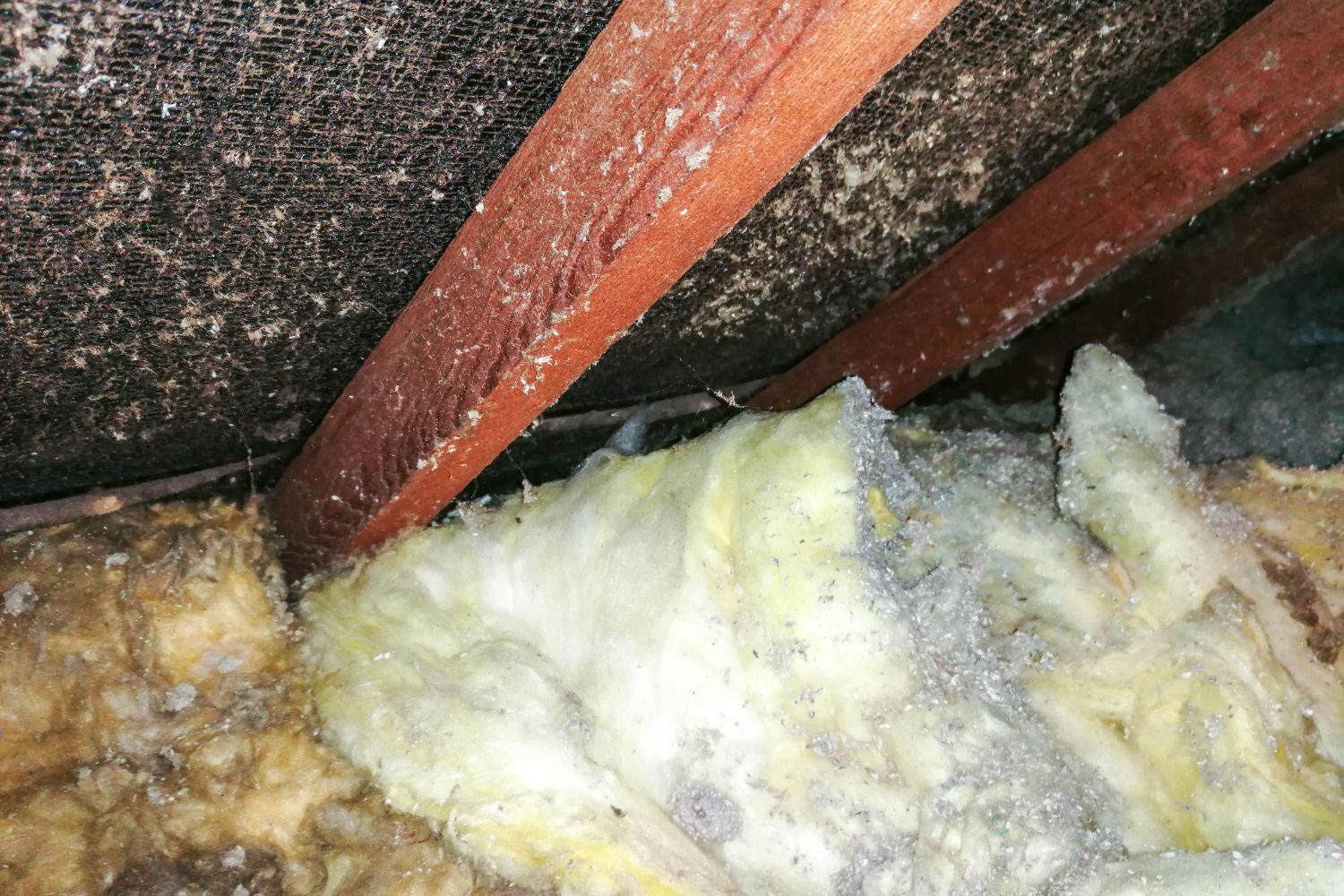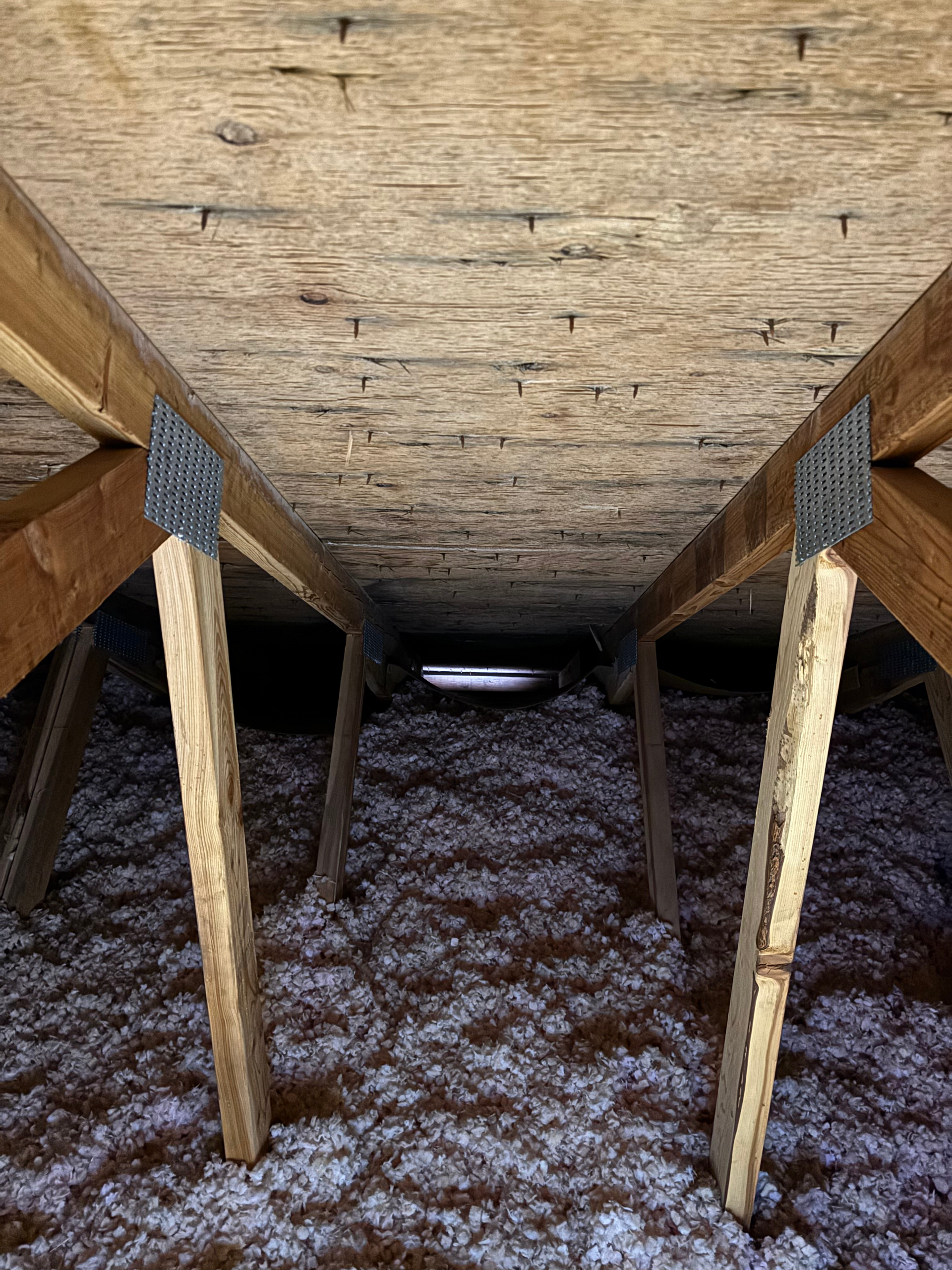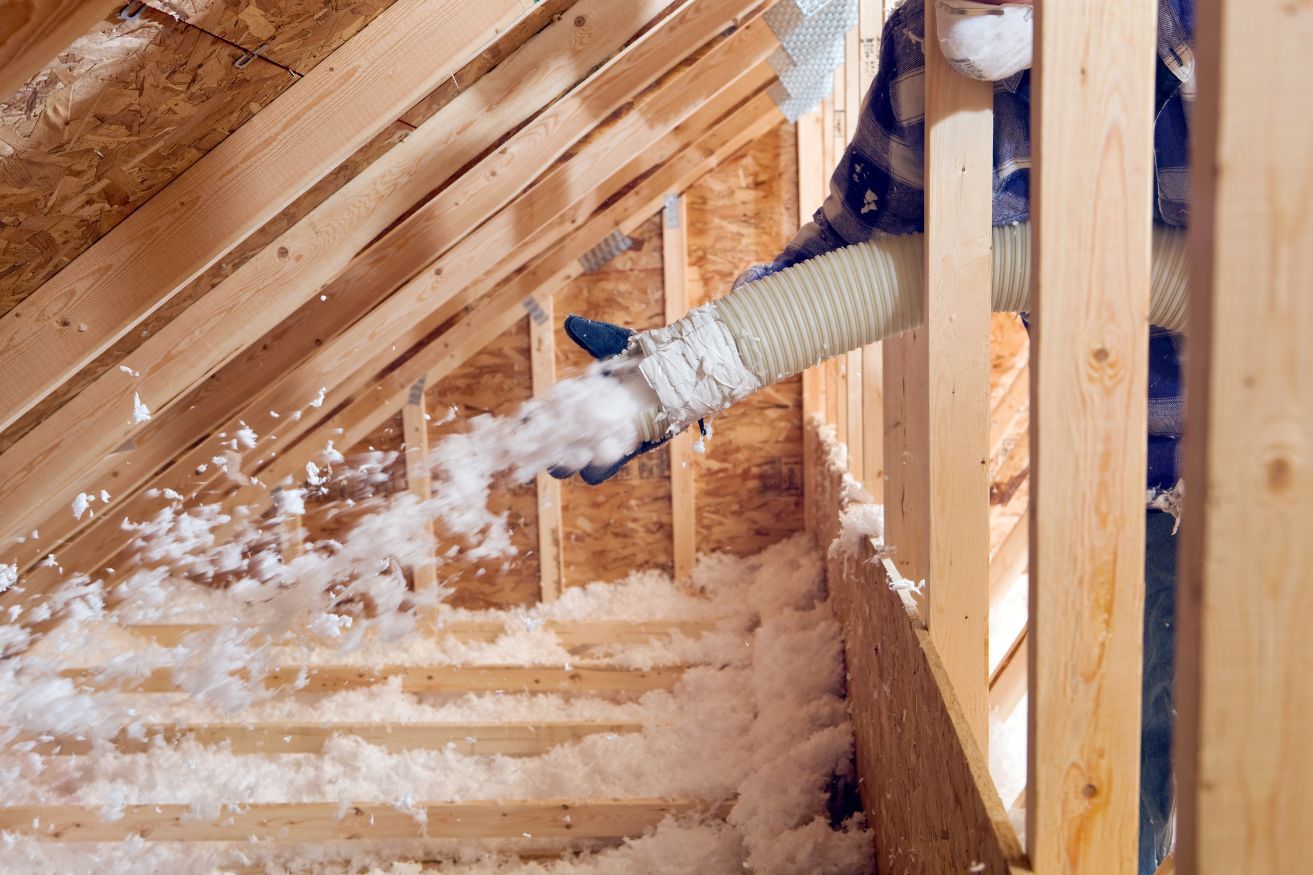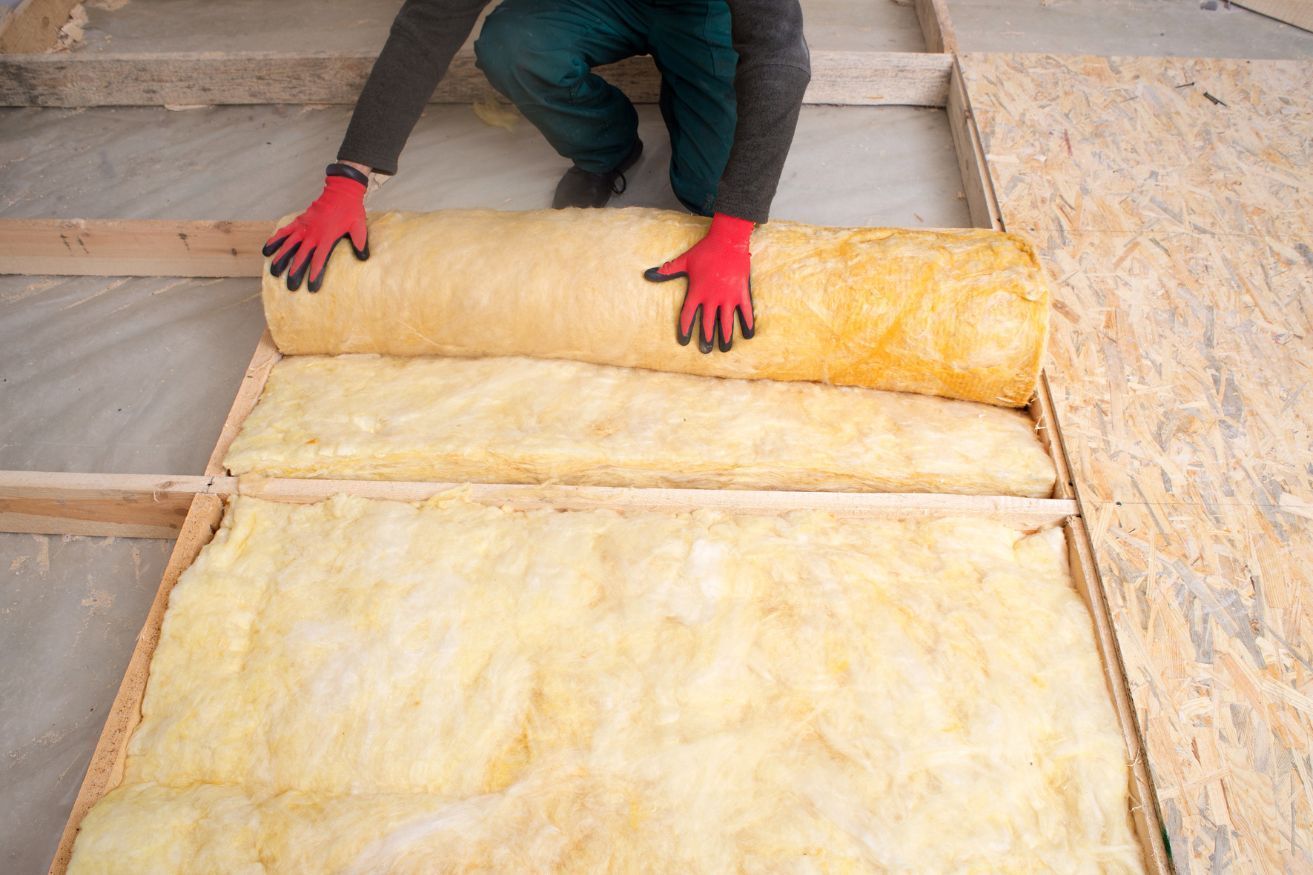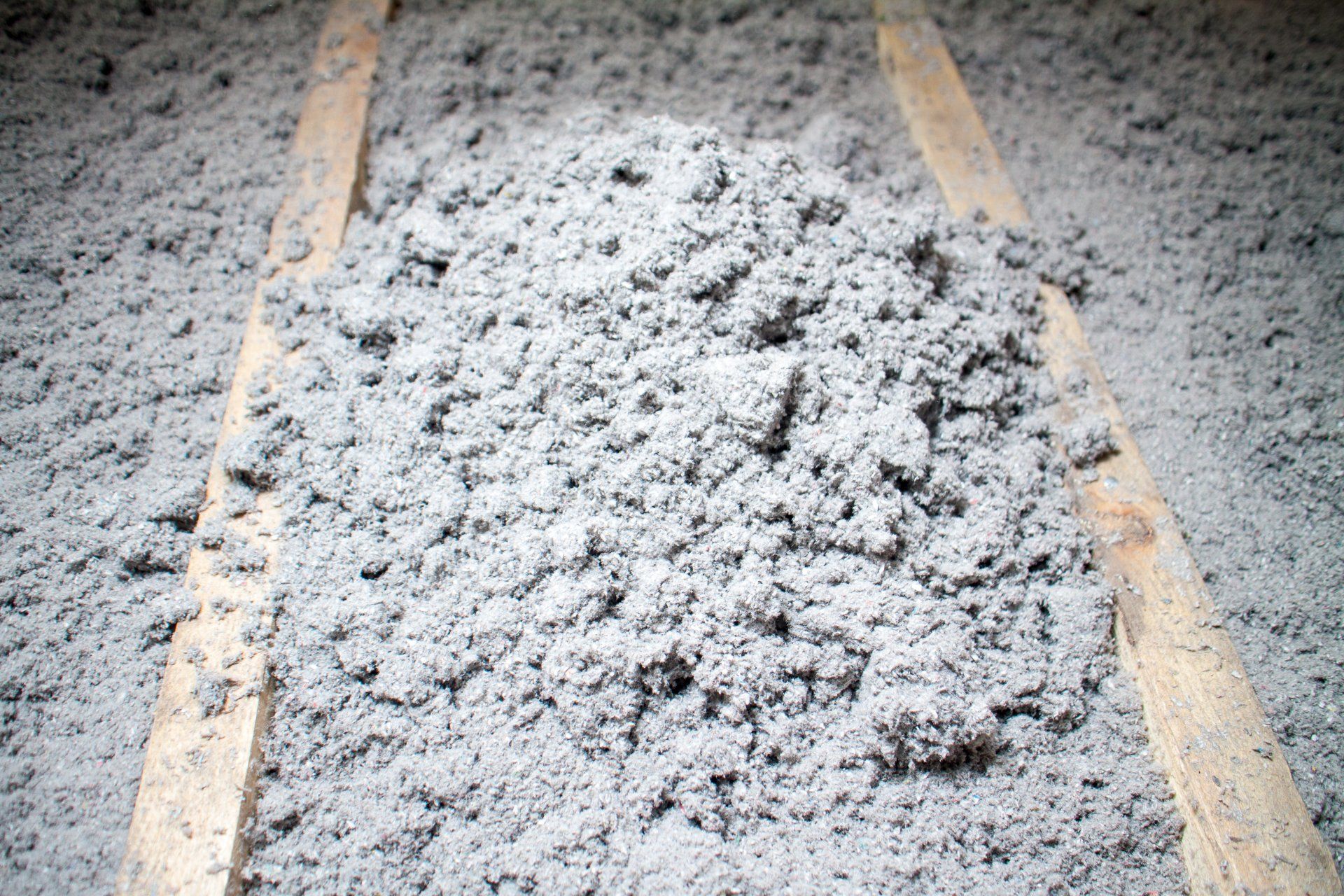The Ultimate Solution for Attic Mold Removal
Step 1 - Comprehensive Attic Inspection:
A proper attic inspection isn’t just a quick peek under the hatch—it’s a full-scale diagnostic of your home’s hidden overhead ecosystem. In Spokane, Coeur d’Alene, and surrounding areas, we specialize in uncovering the hidden issues that wreck your insulation, create mold problems, and drive up energy bills.
Here’s what we look for during a full attic inspection:
- ✅
Roof Leaks & Water Intrusion: We check for active leaks, roof nail rust, staining, and damp insulation. Even a slow drip can lead to major
attic mold or structural rot.
➤ Solution: Repair roofing, replace damaged decking, and dry out the area before mold sets in. - ✅
Improper Bathroom Fan Exhaust: A fan dumping humid air directly into the attic is a fast track to mold growth and soggy insulation.
➤ Solution: Vent fans through the roof or gable with a damper to the exterior—not into the attic. - ✅
Clogged or Blocked Soffits: Insulation can shift and block soffit vents, or they get clogged with dust, debris, or paint. This kills your attic’s ventilation and traps moisture.
➤ Solution: Unblock soffits, install baffles, and ensure free airflow from soffit to ridge. - ✅
Lack of Ventilation (or Wrong Type): We assess ridge vents, gable vents, and attic fans. Poor airflow causes heat buildup in summer and condensation in winter.
➤ Solution: Upgrade to a balanced system of intake and exhaust vents tailored to the attic's size. - ✅
Mold & Insulation Damage: We look for
attic mold on sheathing, framing, and insulation. Damaged or contaminated insulation loses performance and becomes a health risk.
➤ Solution: Mold treatment, insulation removal, air sealing, and reinstallation with high-R-value materials like blown-in cellulose. - ✅
Rodent Infestation & Droppings: Mice love fiberglass nests, and their mess can ruin insulation and spread disease.
➤ Solution: Sanitize, remove soiled insulation, seal entry points, and reinstall clean insulation.
A comprehensive attic inspection is the first step toward solving high energy bills, moisture problems, and indoor air quality concerns. We don’t just point out problems—we fix them
Another important aspect of a comprehensive attic inspection is an air quality inspection. We test for various particulate and compounds including:
- PM2.5 (Particulate Matter 2.5)
- These are tiny airborne particles smaller than 2.5 microns—like dust, smoke, pollen, and mold spores.
- PM2.5 is a big deal for your lungs and can aggravate asthma, allergies, and other respiratory conditions.
- Formaldehyde (HCHO)
- A volatile organic compound (VOC) found in building materials, furniture, and flooring. Long-term exposure can be toxic.
- Often released by new construction materials, particleboard, and even insulation adhesives.
- Total Volatile Organic Compounds (TVOCs)
- This includes a broad group of chemicals emitted from paints, cleaning products, air fresheners, and more.
- High levels of TVOCs can cause headaches, fatigue, nausea, and irritation to your eyes and respiratory system.
- AQI (Air Quality Index)
- A general score combining all pollutants to give you a quick “good vs bad” air quality rating.
- Often color-coded from green (good) to red (danger zone).
💡 Why It Matters (Especially in Attics & Homes):
If you've recently dealt with mold, poor ventilation, or are finishing up attic insulation or encapsulation, a monitor like the M10+ helps verify that your air is safe to breathe.
Step 2-Insulation Removal:
When an attic is contaminated by mold, insulation removal isn’t optional—it’s essential. Mold spores embed themselves deep into the insulation, especially if it’s old, damp, or cellulose-based. Simply spraying disinfectant won't cut it. That’s where professional attic vacuum services come in.
Using a high-powered insulation vacuum, we safely remove mold-infested materials to prevent spores from recirculating through your home’s ventilation system. This step is crucial before applying any mold treatment or installing new insulation. Leaving contaminated insulation behind means risking continued mold growth, structural damage, and poor indoor air quality.
In the Spokane and Coeur d'Alene areas, where seasonal moisture and cold temps are mold’s best friends, fast and thorough attic insulation removal is key to stopping attic mold in its tracks and keeping your home protected long-term.
Top reasons to vacuum out attic insulation due to mold:
- Prevent mold spores from spreading
- Remove contaminated, ineffective insulation
- Prepare the attic for mold treatment & encapsulation
- Ensure new insulation performs efficiently and safely
Don’t let attic mold fester above your head—get it out, clean it up, and seal it tight.
Step 3-Mold Treatment:
We start by using a hospital-grade, powerful EPA-registered disinfectant and mold remover specifically formulated to kill mold at the root—not just bleach it out. It's non-corrosive, low-odor, and safe for use in attics, crawlspaces, and enclosed spaces where mold thrives.
Ideal for attic mold remediation, it penetrates porous surfaces like wood, insulation, and framing to eliminate black mold, white mold, and other fungal growths without the harsh fumes or residue. It neutralizes odor, destroys mold spores, and prevents future growth with residual antimicrobial protection.
Whether you’re dealing with black mold in the attic, harmless attic mold, or the kind that triggers a costly inspection report, our treatment is trusted by pros for its effectiveness, safety, and broad-spectrum kill power.
Key Properties:
- Kills 99.999% of mold, bacteria, and viruses
- Approved by EPA for mold & mildew removal
- No rinse required on treated surfaces
- Safe for people, pets, and HVAC systems
- Eliminates mold odor at the source
- Ideal for use before attic encapsulation
Perfect for:
✔️ Attic mold treatment
✔️ Mold in attic insulation or rafters
✔️ Pre- and post-insulation spray
✔️ Safe disinfecting without harsh chemicals
Step 4-Encapsulation:
Attic encapsulation is the final—and most critical—step in comprehensive mold remediation. After insulation removal, cleaning, and mold treatment, we apply a mold-killing primer like Zinsser Perma-White or Fiberlock Aftershock to fully seal exposed wood surfaces (rafters, sheathing, joists). This isn’t just for looks—it’s your first line of defense against future mold growth.
Why it’s important:
Even after visible mold is removed,
microscopic mold spores can linger in porous wood. Moisture and poor ventilation can reactivate them, causing regrowth—especially in cold, damp regions like
Spokane and
Coeur d’Alene. A mold-killing, antimicrobial encapsulant bonds to wood, creating a durable, breathable barrier that:
- ✅ Kills residual mold spores
- ✅ Blocks moisture absorption
- ✅ Prevents future mold colonization
- ✅ Brightens attic space for easier future inspection
- ✅ Extends the life of your insulation and structure
Attic mold encapsulation is essential for homes with past water damage, poor ventilation, or fans that previously exhausted into the attic. If you want long-term protection, not a temporary fix, encapsulation is a must.
Don’t just clean the mold—seal it out for good.
Step 5-Air Sealing:
Air sealing an attic is the process of locating and sealing all the hidden gaps, cracks, and penetrations in your attic that allow air to leak between your living space and the outdoors. These gaps are usually found around recessed lights, plumbing pipes, electrical wiring, attic hatches, and top plates.
Why it’s important:
🔒
Stop Energy Loss
Without air sealing, your attic acts like a chimney—pulling heated air out in winter and letting hot air in during summer. That forces your HVAC to work overtime, jacking up your energy bills. Combine air sealing with proper insulation, and you’ll actually get the R-value you paid for.
🌬️
Prevent Moisture Problems & Mold
When warm, moist air leaks into a cold attic, it condenses—and that’s a perfect setup for
attic mold, frost, and rot. Air sealing keeps that moisture where it belongs: outside the attic.
❄️
Fight Ice Dams
In cold climates like
Spokane and Coeur d’Alene, warm air leaks into the attic and melts roof snow, which refreezes at the edges, forming ice dams. Air sealing helps regulate attic temperature and prevent these costly winter headaches.
🪟
Improve Comfort
Drafty rooms, uneven temperatures, and cold floors upstairs are often caused by air leaks in the attic. Seal it tight and enjoy more consistent comfort throughout the home.
Step 6-Insulation:
If you’re insulating an attic in a place like Spokane or Coeur d’Alene, where temps swing from deep freeze to blazing heat, cellulose insulation is hands-down one of the smartest, toughest, and most mold-resistant options on the market.
Here’s why cellulose earns the crown:
🧊🔥 Extreme Climate Champion
- Thermal performance: Cellulose has a high R-value per inch (around R-3.7 to R-4.2) and fills every nook and cranny. It creates a dense, draft-stopping blanket that keeps warm air in during the winter and heat out during the summer.
- No gaps = no weak spots. Unlike fiberglass batts, it doesn’t leave cold pockets or allow airflow between pieces.
🌬️ Superior Air Sealing
- Dense blown-in cellulose helps limit air infiltration naturally. When combined with attic air sealing, it drastically reduces heat loss and ice dam formation.
- In harsh climates, this means lower energy bills, fewer hot/cold zones in your home, and a longer HVAC lifespan.
🛡️ Mold & Pest Resistance
- Treated with borates, cellulose is naturally resistant to mold, mildew, and insects.
- Borates act as a fire retardant and a biocide—meaning if moisture sneaks in, cellulose doesn’t immediately become a mold hotel like fiberglass often does.
- It also dries out faster than many insulation types, helping prevent long-term mold conditions.
🌎 Eco-Friendly Bonus
- Made from recycled paper (usually around 85%), it’s one of the greenest insulation options available—and it performs like a beast.
Bottom Line:
If you’re dealing with
attic mold, battling
ice dams, or just tired of sky-high utility bills in an extreme climate,
blown-in cellulose insulation gives you airtight performance, mold resistance, and energy savings that pay for themselves.
